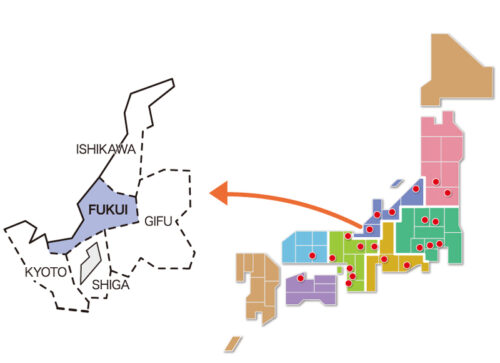Fukui Region

Highest shipment value for polyester filament fabrics
Ever since the Nara Period (710-784), woven textiles were coming off the looms in the Fukui region. The stand-outs here include its silk ‘habutae’ fabrics (fine silk cloths; woven with double-warp yarns and a single weft yarn), used to line kimonos. The region produced nylon in around 1960, followed by polyester in around 1970 and has made its name to this day as a leader in the production of thin and high-density fabrics and polyester filaments of unrivalled shipment value. All the production processes covering weaving, twisting yarns, dyeing, finishing and sewing are available within the region, which is also a strong advantage.
The textile repertoire is varied, going from polyester, nylon, rayon, acetate and silk to the natural fibres of cotton, linen and washi (Japanese paper). The end applications are equally diverse, from fashion wear to industrial materials like sport, automobile and home appliances. Furthermore, taffeta, jacquard, dobby and velvet are also being developed and produced, alongside high-tension knits using high shrinkage yarns. The region is currently working on recycling technique with synthetics as well as production with low global environmental load.
